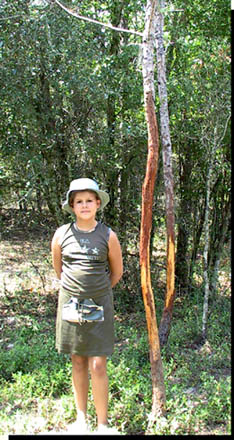Our lovely niece, Christina Kruszeski, kindly agreed to model for me to show the scale of the trees and their rubs.
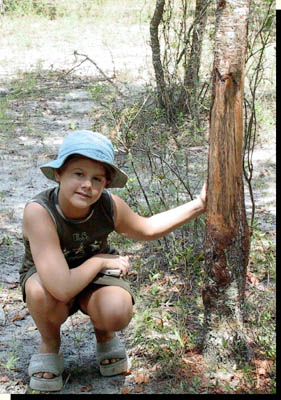
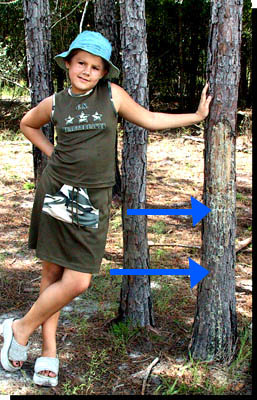
The height is also much greater than a whitetail's--their's would be a height roughly between the two arrows, but again, NEVER on a tree this big.
You might be able to see the dried resin that had run from the tree's wound.
The kiss of death is if it's ringed all the way around--that's "girdling" a tree.
The paths that move nourishment, just under the bark, are destroyed, so everything above the damage starves--in a pine, that means the whole tree dies.
The rolled edges of the damage show signs of healing. Most likely it was last year's rub that was rerubbed this year.
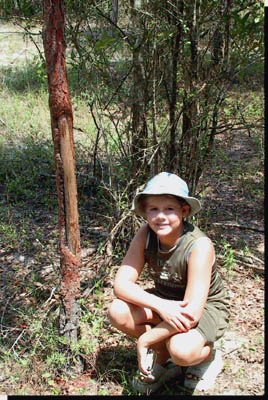
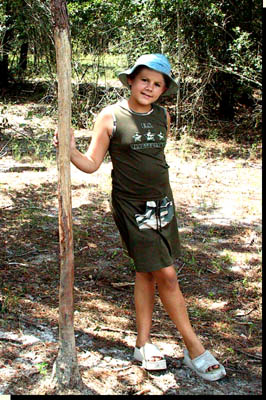
Look at the top of the rub and how it abruptly stops. That tells for sure that the tree wasn't bent over as it was rubbed, but was rubbed only upright.
The top edge of damage is tapered. The tree could have been upright or bent when rubbed.
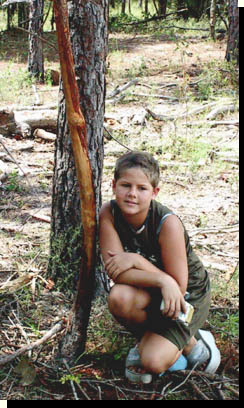
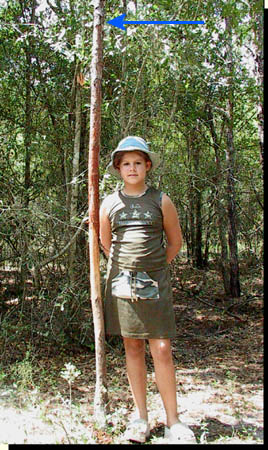
These monsters might bash and smash branches at this height until they're frayed, broken and stripped, but even they don't rub an upright tree to this height.
You see the same bark-stripping along a whole tree with whitetail, but it's on a very slender sapling.
Thank you for your help Christina!
